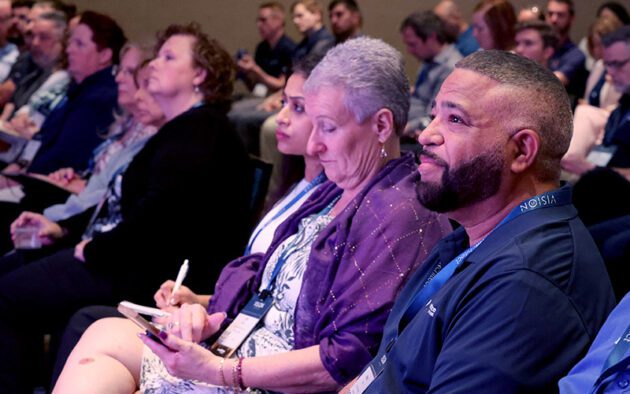Over the past year and a half, the nature of work has evolved at a record and previously unseen pace. It’s no longer simple enough for employees to report for work, do their duties and go home. Now, employees must stay up to date on new safety and health requirements and changing procedures whilst adapting to new levels of work—especially hourly workers in traditionally deskless work environments such as manufacturing, utilities and retail.
As a result, technology is evolving to meet employers’ and employees’ increased needs and, in doing so, altering the ways entire workforces are managed.
According to Gartner’s “Market Guide for Workforce Management Applications,” workforce management continues to incorporate AI and EX, growing from a “system of record and operation” into a “system of differentiation and transformation,” with many organisations aiming to transform the employee experience by investing in WFM applications as part of human capital management (HCM) tech and digital workplace transformation initiatives.
Embracing modern workforce management (M-WFM) is an increasing imperative for businesses of all sizes, especially ones with deskless or hourly workers, with the report stating that 80% of large enterprises are expected to invest in such initiatives by 2025.
But they’re not alone—according to Gartner, even employers of salaried and non-shift-based workforces (that is, those traditionally found in office settings) are embracing the operational benefits of a more modern workforce management solution to stay on top of issues around compliance and keep up with changing legislation and standardising processes.
Here are some key takeaways from Gartner’s recent report:
M-WFM Can Support Organisations More Than Traditional Solutions
The use cases and application of WFM continue to accelerate in both office-based and deskless work environments in response to the ongoing COVID-19 pandemic, and “WFM applications are maturing” as a result.
“Existing WFM vendors have been investing in expanding the employee experience and communication capabilities of their products,” Gartner notes in its report, specifically highlighting WorkForce Software’s integrated employee experience features, which were launched this past June.
According to Gartner, WFM capabilities like those found in the WorkForce Suite also make it easier to “introduce and ensure governance of new processes, such as global rules for employee shift swapping or attestation of working time,” and to ensure compliance with labour laws, regulations, rules and standards across multiple regions, doing away with the need for multiple vendors.
M-WFM Solutions Offer Key Capabilities Others Don’t
In the report, Gartner details how the new breed of WFM has been especially beneficial during the COVID-19 pandemic, with vendors like WorkForce Software reducing the likelihood of transmission and helping employees get back to work safely through mobile applications for clock-in/out, health-check surveys for self-assessments and employee rostering systems that assist with contact tracing by identifying which workers may have previously come into contact with colleagues who eventually tested positive.
Not only that, but the pandemic has also highlighted the need for employers to provide employees with ongoing support, especially as economies reopen and organisations scale throughout the recovery.
Gartner recommends investing in solutions that support employee communications with messaging capabilities (noting that they’re especially useful for “employees who may not have a corporate or organisational email address,” which is common in hourly or shift-based jobs), support ongoing learning and offer survey capabilities to request feedback and gauge employee morale during difficult times (such as when an employee has worked too many consecutive shifts and may be at risk of burnout).
Additionally, supporting flexible work patterns by providing easy access to shift swaps/requests and enabling employees to take more control over their rosters can enhance their work/life balance – and labour forecasting and analytics can be leveraged to plan for future headcount changes based on demand.
Traditional HCM Suite Vendors Aren’t Providing Enough
Finally, Gartner states that the WFM functionality currently offered by traditional HCM suite vendors is not as robust as those provided by dedicated WFM suite vendors.
HCM suite vendors traditionally offer low functional depth and are only applicable to a medium-sized selection of industries and use cases, whilst WFM suite vendors are better equipped to provide broad functionality to an array of industries.
Gartner says that this “responsive burst of innovation” has “led to a new generation of WFM applications… that have the potential to transform and augment WFM” as we know it.
Read this Gartner research and learn why a robust and modern WFM suite with strong overall functionality, depth and broad industry usage is preferable to an HCM vendor. Visit our Resources page for additional information.




